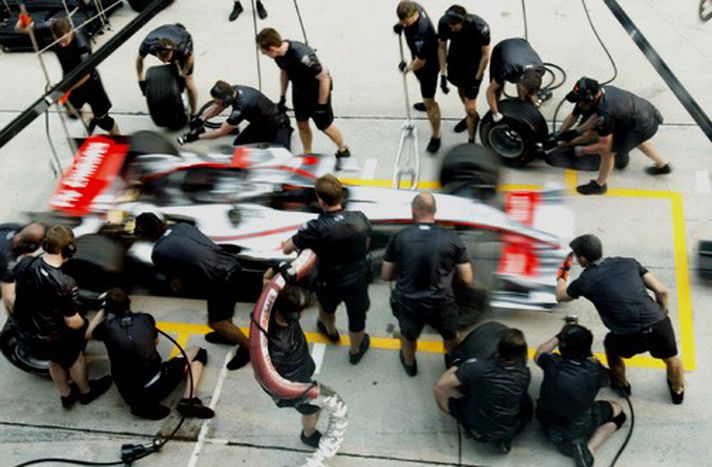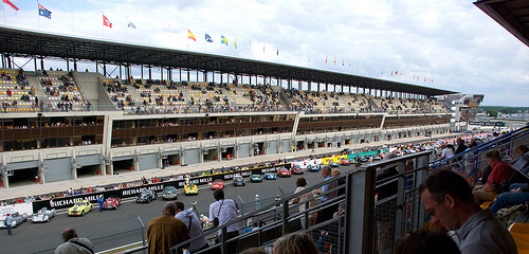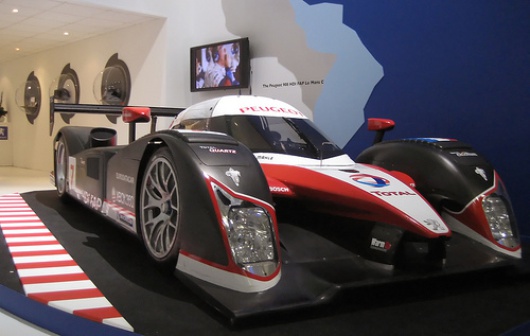
Peugeot HDi FAP: making faster cars, saving energy in Formula 1
Published on
Translation by:
Martyna PrzybyszCar makers constantly compete to make the best car possible, but their ideas are first being tested on the Formula One races. The next turbo-diesel prototype programme is announced on 9 February
 The loud roar of engines, colourful cars and the fastest drivers in the world, as well as beautiful women and champagne – these are the undeniable elements of the Formula One races which attract crowds of excited fans, both in the auditorium and in front of the box. Yet Formula One is also about a heightened rivalry between the carmakers, who, provided with a multimillion budget, test innovative technical solutions, hoping to later introduce them into the mass production of the vehicles. ‘My crew spends millions of dollars to build these amazing toys, only to later pay even more for me to drive in them,’ jokes German-born Brazilian driver Nelson Piquet, 23. The biggest challenge for a man and his machine, and probably the hardest route, is the Le Mans 24 Hours race, where the winner makes the biggest number of circuits during the 24-hour slot.
The loud roar of engines, colourful cars and the fastest drivers in the world, as well as beautiful women and champagne – these are the undeniable elements of the Formula One races which attract crowds of excited fans, both in the auditorium and in front of the box. Yet Formula One is also about a heightened rivalry between the carmakers, who, provided with a multimillion budget, test innovative technical solutions, hoping to later introduce them into the mass production of the vehicles. ‘My crew spends millions of dollars to build these amazing toys, only to later pay even more for me to drive in them,’ jokes German-born Brazilian driver Nelson Piquet, 23. The biggest challenge for a man and his machine, and probably the hardest route, is the Le Mans 24 Hours race, where the winner makes the biggest number of circuits during the 24-hour slot.
Triumphant return of Peugeot
The Peugeot 908 appeared to be the dark horse of this season. Powered by a diesel engine, it is made with HDi FAP technology. Without a doubt, this is a triumphant return of the French engineer, which maintains eco-friendly policies while constructing engines. The Peugeot group has marked their return on the Circuit de la Sarthe, introducing the fastest vehicle in the history of the Le Mans 24 Hours race. In June 2008 French racer Stephane Sarrazin set a speed record (246, 068 km/h in the 102 circuit 13,629 km long).
 Unfortunately, he lost on the account of the German engineers with their dominating Audi R10 TDI diesel in the final round. It was a mixture of the lack of both experience and luck, which was later confirmed by the ninth driver of the team, Frenchman Franck Montagn, 3y. ‘We could say that the results are relatively good, but I am simply glad that I got to be on the podium of Le Mans 24 Hours. The competition was intense, but the conditions were not easy and we didn’t have much experience. However I had some pretty amazing times that weekend and really enjoyed myself while driving the Peugeot 908 HDi FAP.’
Unfortunately, he lost on the account of the German engineers with their dominating Audi R10 TDI diesel in the final round. It was a mixture of the lack of both experience and luck, which was later confirmed by the ninth driver of the team, Frenchman Franck Montagn, 3y. ‘We could say that the results are relatively good, but I am simply glad that I got to be on the podium of Le Mans 24 Hours. The competition was intense, but the conditions were not easy and we didn’t have much experience. However I had some pretty amazing times that weekend and really enjoyed myself while driving the Peugeot 908 HDi FAP.’
Consistency programme
In the final round of the Le Mans series 2008 race, Peugeot presented their new silver-metallic 908 HY prototype on the Silverstone racecourse in Great Britain. This machine is equipped with KERS (Kinetic Energy Recovery Systems), which recovers waste kinetic energy from the car during braking. The existence of these two traditional and mechanical systems allows both to combine for a more effective impact. Combining a diesel engine with the internal combustion engine allows it to work in a number of different modes during the race. For example, once in the pit-stops - where safety prohibits extreme speeds - the driver can only use the electrical option, thanks to the energy accumulated in the batteries.
Energy can add power or limit petrol usage
The moment the real race starts, KERS comes into play. With the speed of approximately twenty to thirty seconds per circuit, it supplies the car with some extra energy. This energy can be used by driver in two different ways; it can add power of 80 km for a period of 20 seconds in a circuit, or it can limit the petrol usage by 3-5%.
This innovative system, which is meant to be a total knockout for the opponents, suggests an even fiercer competition to be seen in 2009. Michel Barge, director of Peugeot Sport, is very optimistic about the future of KERS. ‘Introducing KERS in 908 HDi FAP is the main aim of our programme of consistency. It is in fact as much of a sport challenge for the drivers as it is a challenge for the Peugeot engineers, continuously working on the Peugeot brand through the test races. After presenting the new HDi FAP technology during this year’s races, it became clear that a fantastic opportunity for Peugeot to gain invaluable experience has arisen. It will only lead them to later use their expertise in the serial production of vehicles that make such great use of KERS. However, the application of this technology in the 2009 Formula One races will highly depend on the rules set by the Automobile Club de l’Ouest (‘Automobile Club of the West’ or ACA, the western region of France).’
How long will we have to wait for a response from the other engineers? Motorisation is no longer only a rivalry on the racecourse. Undoubtedly, it is a competition in succeeding at finding innovative technical solutions while constructing Formula One vehicles. That inevitably leads to gaining high profile clients, who do value comfort, but above all, are eco-friendly.
Translated from Formuła 1: z wyścigów na autostrady



